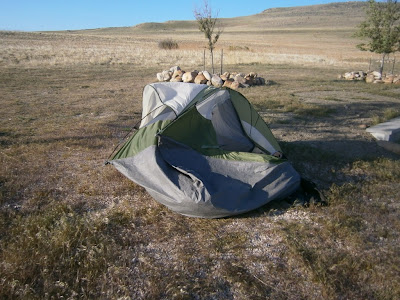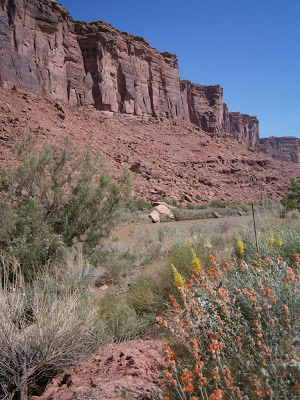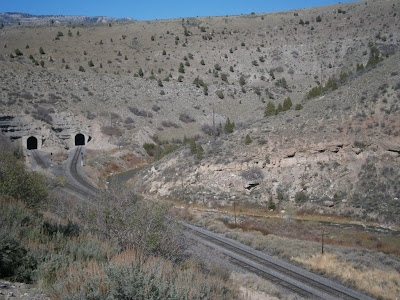Under The Volcano
At high latitude and high elevation it really is winter here. There were significant
snowbanks at the roadside as we climbed up and over the pass this morning. Some
really nice twisties also presented themselves on good road, but the cold
temperature rendered the road surface as well as my reflexes a bit
untrustworthy so I held it back somewhat.
 |
| It ain't summer yet! |
 |
| I have been warned about icy roads, rough roads, tsunami, wind gusts, steep hills, landslides, even earthquakes. What next! And really, what are we supposed to do with that? |
On the morning of Sunday, May 18, 1980 my colleague Barry
Duguid and I were bussing our students back from a science field trip on the
west coast of Vancouver Island. As we arrived
at Departure Bay
everyone was abuzz at the news of the explosion of Mt. St. Helens.
It was expected, but the nature of the eruption was rather atypical. Most
volcanoes don’t blow their heads off. St Helens
was demoted from the 4th tallest mountain in the state to the 14th
in a matter of seconds. The primary eruptives were pyroclastics (ash and
cinders) rather than lava, which was the stuff that led to the burial and
preservations of the forest mammals at the John Day
fossil site.
 |
| Mt. St. Helens. Sleeping. |
On average, St, Helens erupts every 125 years. Sometimes
pyroclastics, sometimes lava. Two thousand years ago it spewed a large volume
of fluid, basaltic lava that resulted in two geological features that we
visited today.
Imagine a river of lava that, as it cools on the outside
surfaces, forms a solid crust on the top, bottom and sides. Meanwhile the
interior is still a hot liquid which eventually drains out, leaving what looks
like a hollow pipe called a lava tube. Ape Cave
is the local example of such a thing. It resembles a small railway tunnel a few
miles in length. While The Bruiser had a little nap in the parking lot, I embarked
on a self-guided, underground tour of Ape Cave.
Armed with my little LED flashlight I walked about a half mile in utter
darkness, and in an environment considerably colder than it once was! My
endpoint was a feature called The Meatball, a solid lump that got hung up on
the ceiling of the tunnel buoyed up by the underground river of lava. It does
look a bit precarious hanging up there and I would think one should be cautious
about lingering too long beneath it.
 |
| Entrance to a lava tube |
 |
| The "Meatball". |
When I emerged, a busload of 4th graders arrived in the parking lot. I thought that was an excellent opportunity to head for the exit.
This led to a study of a second feature often arising from fluid
lava flows, and found just a short distance down the road. When a forest is
inundated with basalt, the trees and logs are engulfed and incinerated, but not
before the lava hardens around them. Tree casts result. Once the wood
disappears, the logs become tunnels and the tree trunks cylindrical holes in
the flow.
As the day warmed up, the curvy roads became a wee bit of
fun until they ultimately led us to the dreaded I-5. Juiced up on the good
stuff, The Bruiser pulled me along in excellent form. This bike impresses me so
much with its smooth and gutsy character, forever reliable and a real treat to
ride. He is nimble in the corners (not so much in the gravel, although he got a
bit huffy at my ‘hippo in spandex’ remark) and steady on the straightaways.
Thank you, Bruiser, for your stalwartliness and dependability as we covered 1/3
of the earth’s circumference in the last seven weeks.
 |
| The rainforest |
 |
| Beginning of the Last Leg |
Personally, I have about hit the wall. I have had the experience of a lifetime and I am most fortunate to have had the opportunity and the wherewithal to pull it off. But I am about done. I would need a good pause right about now before I could do much more.
Initially I considered a motel in Seattle tonight where I will meet Brent at
noon tomorrow. Truth is, I much prefer the outdoors. So after buying myself a
new air mattress (my ass hit the ground at midnight last night) we established
ourselves at Millersylvania State Park near Olympia.
It is busy and noisy as the first hint of summer has arrived for the weekend. I
treasure my solitude, but quite enjoy the energy of this place this evening.
My neighbour is a good fellow with plans for some great and
ambitions adventures in life, but who must first climb some hurdles with
chemotherapy.
Opportunity and
wherewithal….
Good fortune and adversity are not evenly disbursed.
A Chilean cab is going down rather well. There will be none
left for breakfast.













































